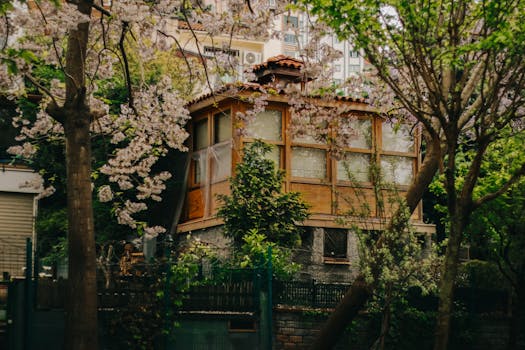
Urban Green Spaces: The Future of Outdoor Living in European Cities by 2025
Urban Green Spaces: The Future of Outdoor Living in European Cities by 2025 is a rapidly growing trend that is changing the face of urban planning and design. As cities continue to expand and urbanize, the need for green spaces has become increasingly important. These spaces not only provide a tranquil escape from the hustle and bustle of city life but also offer numerous benefits for both physical and mental health.
Introduction to Urban Green Spaces
Urban green spaces refer to any area of vegetation in an urban environment, including parks, gardens, green roofs, and even small patches of grass or trees. These spaces can be public or private, and their primary function is to provide a natural oasis in the midst of urbanization. The concept of urban green spaces has been around for centuries, but it has gained significant attention in recent years due to the growing awareness of the importance of sustainability, environmental conservation, and public health.
Benefits of Urban Green Spaces
The benefits of urban green spaces are numerous and well-documented. Some of the most significant advantages include:
- Improved air quality: Urban green spaces help to purify the air by absorbing pollutants and releasing oxygen.
- Reduced noise pollution: The presence of trees, grass, and other vegetation can significantly reduce noise levels in urban areas.
- Increased biodiversity: Urban green spaces provide a habitat for various plant and animal species, helping to maintain ecosystem balance and promote biodiversity.
- Enhanced mental health: Spending time in nature has been shown to reduce stress levels, improve mood, and even alleviate symptoms of anxiety and depression.
- Physical activity: Urban green spaces often feature walking trails, playgrounds, and other recreational facilities, encouraging physical activity and social interaction.
European Cities Leading the Way
Many European cities are at the forefront of urban green space development, incorporating innovative designs and technologies to create sustainable and thriving environments. Some notable examples include:
- Stockholm, Sweden: The city’s ‘Green Strategy’ aims to increase green spaces by 10% by 2025, with a focus on urban forestry, green roofs, and community-led initiatives.
- Copenhagen, Denmark: The Danish capital is renowned for its ‘Green Wave’ initiative, which involves creating a network of green spaces and bike lanes to reduce carbon emissions and promote sustainable transportation.
- Barcelona, Spain: The city’s ‘Superblock Program’ is transforming urban areas into pedestrian-friendly green spaces, prioritizing community engagement and social interaction.
Challenges and Opportunities
While the benefits of urban green spaces are clear, there are also challenges and opportunities to be addressed. Some of the key issues include:
- Funding and resource allocation: Creating and maintaining urban green spaces requires significant investment, which can be a challenge for cities with limited budgets.
- Community engagement: Urban green spaces should be designed with community needs and preferences in mind, ensuring that they are inclusive and accessible to all.
- Climate change: Urban green spaces can help mitigate the effects of climate change, but they also require adaptation strategies to address the impacts of rising temperatures, changing precipitation patterns, and increased frequency of extreme weather events.
Conclusion
Urban Green Spaces: The Future of Outdoor Living in European Cities by 2025 is a vital component of sustainable urban planning and design. As cities continue to evolve, it is essential to prioritize the creation and maintenance of these spaces, recognizing their numerous benefits for both human health and the environment. By addressing the challenges and opportunities associated with urban green spaces, we can work towards a future where cities are not only more sustainable but also more livable, resilient, and thriving.






